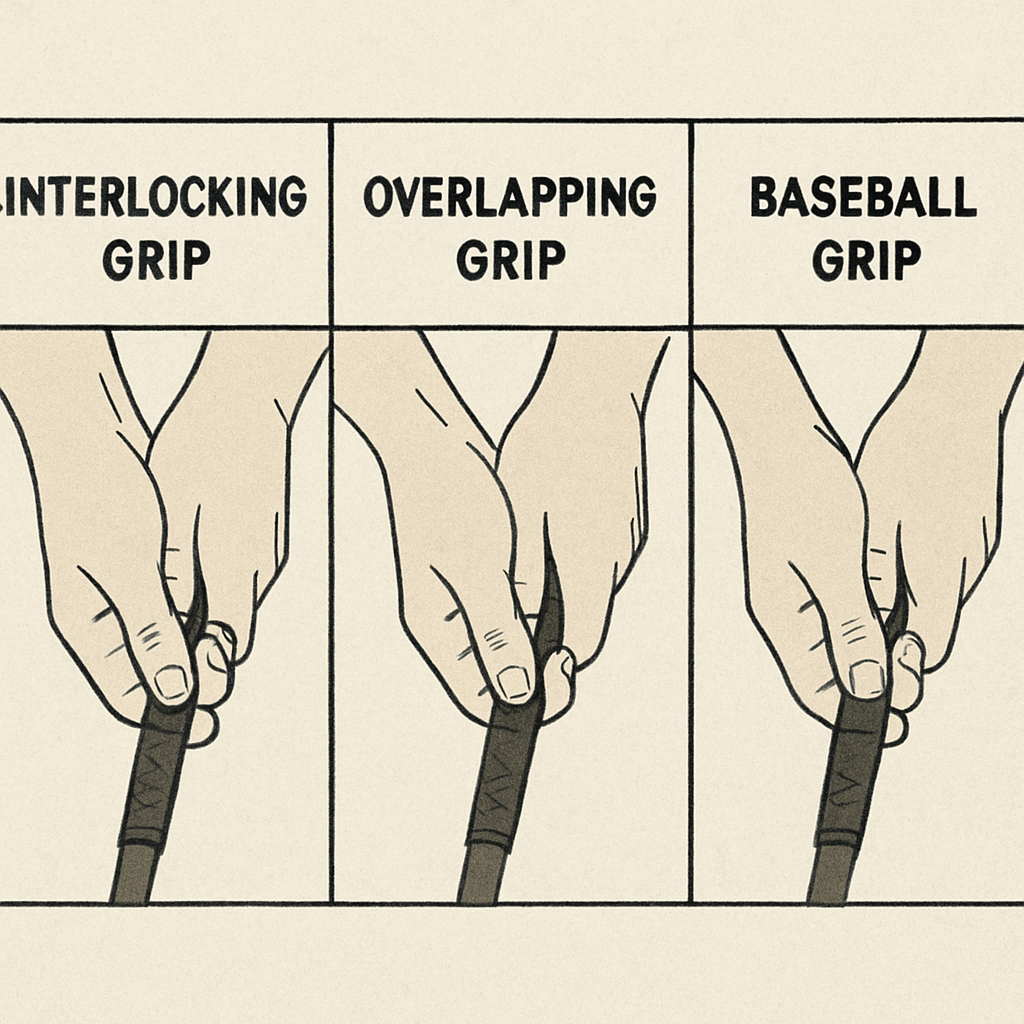2 The Ultimate Guide to Golf Grips How to Hold a Golf Club Correctly

Why Your Golf Grip Matters
Your grip is the only connection between you and the club. It influences your swing, the flight of the ball, and ultimately, your score. An improper grip can lead to slices, hooks, and a lack of distance. Gripping the club correctly can help you achieve straighter shots and more distance.
Types of Golf Grips
 Overlapping Grip
Overlapping Grip
The overlapping grip, also known as the Vardon grip, is the most common grip among professional golfers. To use this grip, the little finger of your trailing hand (right hand for right-handed players) overlaps the index finger of your lead hand (left hand for right-handed players). This grip provides a balance of control and power.
Interlocking Grip
The interlocking grip is popular among golfers with smaller hands. Here, the little finger of your trailing hand interlocks with the index finger of your lead hand. This grip provides a secure connection and is favored by famous golfers like Tiger Woods and Jack Nicklaus.
Ten-Finger Grip
Also known as the baseball grip, the ten-finger grip is often recommended for beginners or players with smaller hands. All ten fingers are on the club, which can offer more leverage and power.
How to Grip a Golf Club for Beginners
Step-by-Step Guide
- Align the Clubface: Start by aligning the clubface square to your target line.
- Position the Lead Hand: Place the club in your lead hand, ensuring the grip runs diagonally across your palm. Wrap your fingers around the club, with the thumb pointing down the shaft.
- Add the Trailing Hand: Position your trailing hand below your lead hand. The palm should face the target, and the thumb should rest along the lifeline of the trailing hand.
- Check Grip Pressure: Maintain a light grip pressure. Squeezing too tightly can hinder your swing and lead to tension.
Grip Pressure: Finding the Right Balance
Grip pressure is crucial for an effective golf swing. Too much pressure can cause tension and restrict your wrist movement, leading to inaccurate shots. Aim for a grip pressure that feels secure but relaxed, similar to holding a tube of toothpaste without squeezing any out.
Avoiding Common Grip Mistakes
Slicing the Ball
A slice is a common issue that results from an open clubface at impact. To avoid slicing, ensure your grip is neutral. Adjust the position of your hands if needed to promote a square clubface at impact.
Hooking the Ball
A hook occurs when the clubface is closed at impact. A strong grip, where the hands are turned too far to the right (for right-handed players), can cause this. Adjust to a more neutral grip to prevent hooking.
Customizing Your Golf Grips
Midsize and Oversize Grips
Choosing the right grip size can improve comfort and performance. Midsize or oversize grips can help players with larger hands or those who suffer from arthritis by reducing tension and improving control.
Personalized Golf Ball Markers and Stamps
While not directly related to your grip, custom golf ball markers and stamps can add a personal touch to your game. They make it easy to identify your ball and can reflect your personality on the course.
Golf Grip Techniques for Distance and Accuracy
For Distance
To maximize distance, ensure that your grip allows for a full wrist hinge during the backswing. This generates more power and speed through the ball.
For Accuracy
Focus on maintaining a consistent grip throughout your swing. A stable grip helps keep the clubface square at impact, leading to straighter shots.
Conclusion
Gripping a golf club correctly is essential for any golfer looking to improve their game. By understanding the different types of grips, grip pressures, and techniques, you can tailor your grip to enhance your performance on the course. Practice these tips to achieve a more controlled, powerful, and accurate swing.
Remember, the best golf grip is one that feels comfortable and helps you achieve your desired results. Experiment with different styles and adjustments to find what works best for you.
Now that you’re equipped with the ultimate guide to golf grips, it’s time to hit the course and put your newfound knowledge into practice!
